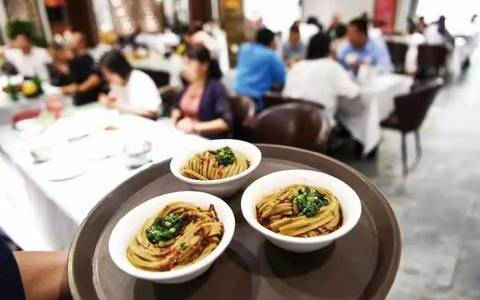▲点击蓝字关注食品行业未来!回复数字“2”,加入全球最大食品微信群。
Source: Foodnavigator.com
Editor:Anna HU (Wechat ID: Nana-annahu), Jeri Peng
Food and beverage manufacturers should shift their focus from items for household consumption to those suitable to be eaten on the go if they want to build brand loyalty among Chinese consumers under the age of 30.
Although the overall number of people in the age group as a percentage of the total population will decrease as China’s society rapidly ages, these consumers are increasingly earning and spending more, according to Kantar World Panel.
Speaking at the Food and Beverage Innovation Forum (FBIF2017) in Shanghai, the firm’s general manager Jason Yu said consumers under 30 were willing to spend more than the national average across 14 out of 25 major food and beverage categories.
“For these people,four key trends drive consumption and they are flavour, packaging, indulgence and above all advertising. Just getting one of these right can drive purchase.
“These also rank higher than price or discounts – premiumisation is popular.”
He argued that food and beverage firms which were able to develop products for out of home consumption would have the best chance of building brand allegiance, with juices, ready-to-drink teas and coffee, bottle water products and alcohol proving popular.
In the top seven categories for the under 30s, cheese and biscuits were the only two food items.
“Out of home consumption is a massive opportunity,” he added.
“Manufacturers really need to focus on this. Sixty per cent of consumption comes here forthose bon after 1990 in tier one and two cities, so if you focus only on items for household consumption you are missing big opportunities.”
Taobao versus Tmall
Achieving success with these consumers also involves exploiting e-commerce, with younger peopleseeming preferring Taobao to Tmall for food purchases.
“Mobile and social media payments are very popular but brands also need to be aware there is now ablurred communication line between marketing communications and payment. Very often these are taking place at the same time,”said Yu.
While e-commerce opportunities abound, the food and beverage sector has been struggle to combatthe impact of reduced retail footfall.
Packaged foodgrowth was only 1% last year while the nation’s 50 biggest retailers sawoverall sales drop by 0.5% in 2016.
Despite this,imported foods bucked the trend with several categories enjoying sales surges.
Imported chocolate, biscuits and candy all saw double-digit increases in 2016, and thetotal spend on imported foods increased from 11% to 13% in the past two years.
“This is from nationwide data,”added Yu,“not just places like Shanghai”.We should pay attention to this because imported products are accounting for a bigger percentage of the total.”
Food & Beverage Innovation Forum 2017(FBIF2017) was held in Shanghai from April 19th to 21st, 2017. The theme of FBIF2017 is “Global Innovation, Powering Future!”.Topics include Trends, R&D, Marketing and Packaging. 1500+ attended. Speakers include:Zhang Jianqiu, Executive President, Yili Group;Stephen Maher, President, Mondelez China;Zhou Li, Secretary of the Board, Ph.D, Nongfu Spring;Yan Weibin, Chairman, Ausnutria;Craig Slavtcheff, Global VP, R&D, Campbell Soup;Zhang Liaoyuan, Founder, Three Squirrels;Jet Jing, VP, Alibaba Group;Martin Suter, Head of eCommerce, China at AB InBev.For more please reply “FBIF”.
/ Tips /
Click the Menu “FBIF” to view “Agenda“, “Speakers“, “Partners” and other On Site Activities
Reply “attendee“, “photo“, “news” to get related information. For other key words, pls reply “keywords“
/ Read More/
The “Three-three Principle” Helps Yili’s Innovation Stand Still
Share a Coke: How the Groundbreaking Campaign Got Its Start
Nestle Highlights 15 Goals for Health and Wellness
PepsiCo Launches Nutrition Greenhouse Incubator
DuPont’s Solution to Nutrition for Hospital Patients – Ice Cream
/WeChat Groups /
Long Press this QR Code to follow“FBIF“.
Reply number “3” to join inCEO,R&D,Marketing,Packaging,Functional Foods,Dairy,Beverage,Snacks, etc. WeChat groups(Group members include seniors from Nestle, Coca-Cola, PepsiCo, AB-InBev, Yili, Mengniu, Master Kong and Nongfu Spring etc.)
▲follow us and”Sticky On Top”
原创文章,作者:网络转载,如若转载,请注明出处:https://www.qiyu88.com/188540.html















